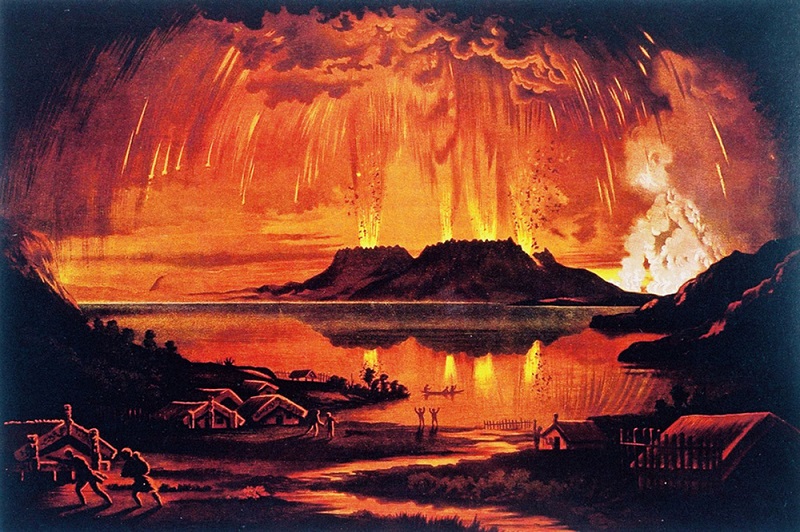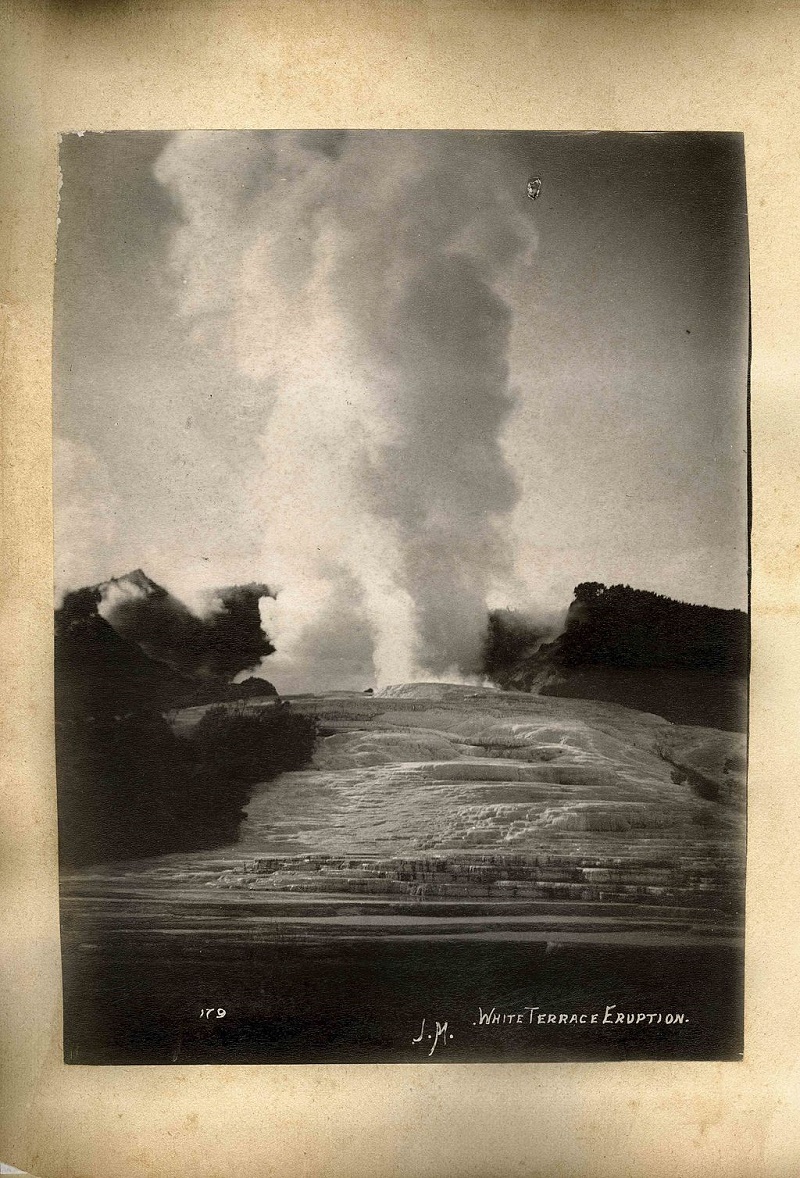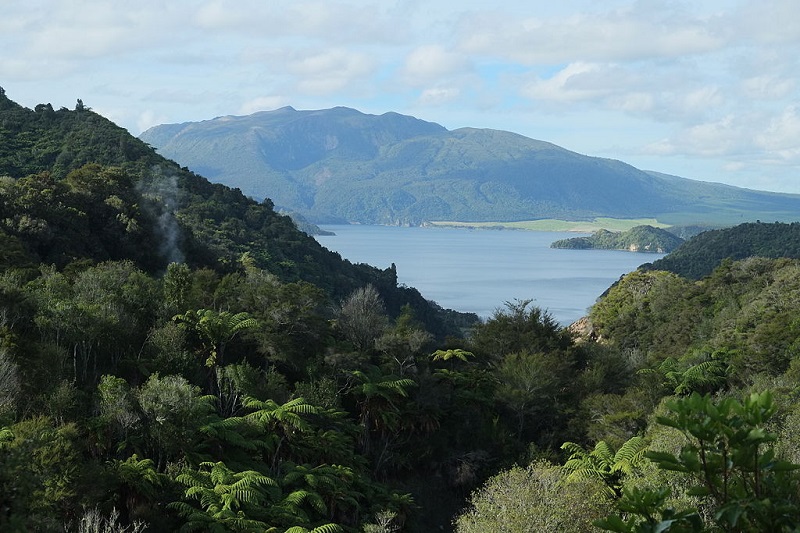
Mt Tarawera in eruption Photo Credit: Charles Bloomfield via Wiki Commons
As we all know, Rotorua is the geothermal capital of New Zealand but one event sticks in the mind of all who visit the city in its vast history of volcanic activity: the 1886 eruption of Mt Tarawera. This is perhaps one of the most famous volcanic eruptions in New Zealand’s history, certainly of those to be witnessed by man. The most famous probably dates back to 200 AD when a volcano that now sits beneath the waters of Lake Taupo unleased the world’s most powerful eruption in 5,000 years sending a plume of dust and gases 50 kilometres into the stratosphere. The effects of this eruption would have been felt around the world with cooler temperatures for a number of years afterwards.
Mt Tarawera
Thankfully the eruption of Mt Tarawera did not have the same impact, however the eruption did cost the lives of approximately 120 people, nearly all Maori and also caused the destruction of the famous Pink and White Terraces, widely regarded as the eighth wonder of the world. The eruption remains the deadliest in the history of New Zealand settlement.
The eruption of Mt Tarawera began in the early hours of 10 June and lasted for six hours. People were awoken in the early hours of the morning to earthquakes, lightening and fountains of molten rock. Columns of smoke and ash spiralled up to 10km high into the sky and were seen for miles around. The eruption was heard as far away as Blenheim and some thought it was an attack by a Russian warship which had recently visited Wellington.
The eruption caused devastation across many Maori settlements close to Mt Tarawera. The villages of Te Tapahoro, Moura, Te Ariki, Totarariki and Waingongongo were all completely destroyed or buried beneath hot mud. At Te Wairoa, 15 people were killed, however many more survived by huddling together in some of the stronger buildings.
Bad omens
Whilst there were no warning of the eruption prior to the 10 June other than an increase in hot spring activity, 11 days prior to the eruption Maori and Pakeha tourists travelling on Lake Tarawera reported a sighting of a phantom war canoe on the lake. Tribal elders believed this was a waka wairua (spirit canoe) – an omen of doom.
The Pink and White Terraces

Mt Tarawera erupts destroying the Pink and White Terraces Photo credit: Australian National Maritime Museum via Wiki Commons
The eruption cost the lives of over 120 locals, a loss that was widely felt throughout the local communities. Another loss that was widely felt was that of the Pink and White Terraces. In the 1880s, tourists would flock from far and wide to see these beautiful terraces on the shores of Lake Rotomahana. Their tiers of delicately tinted silica and cascading hot pools were considered to be the eighth wonder of the world and following the eruption, the terraces sunk 100m and were eventually covered over by Lake Rotomahana.
What remains today?

View over Lake Rotomahana looking towards Mt Tarawera
Whilst the Pink and White Terraces may have been destroyed, there is still the chance to find out more about the history of New Zealand’s deadliest eruption. A visit to the site at Te Wairoa is a must on any trip to Rotorua where you can visit The Buried Village where many people survived by sheltering in the stronger buildings.

